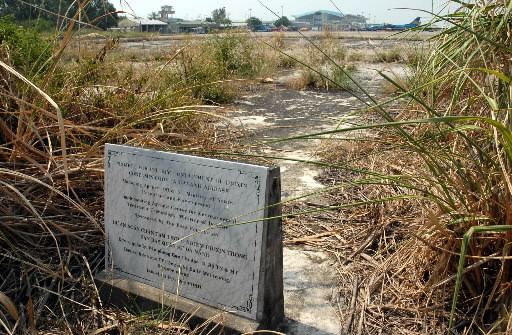Vietnam: 50 years after the use of defoliants, Part 3: Path to a solution, Article 1
Jul. 25, 2012
Article 1: Decontamination
Full-scale operation to finally begin
by Takamasa Kyoren, Staff Writer
Wide area affected: International support key
More than 50 years since 1961, when the United States military began spraying defoliants containing highly toxic dioxin during the Vietnam War, Vietnam and the U.S. will finally launch a full-scale decontamination effort this summer. Meanwhile aid for the victims of defoliants and chemical weapons such as the poison gas used by the Japanese military as well as restoration of the environment and elimination of these weapons is a long way off. Solutions are being sought based on the results of scientific research and through grass-roots support.
Da Nang International Airport in central Vietnam is one hot spot. In August it will be the site of the first full-scale effort to remove dioxin. In a joint project between the two nations, the U.S. will provide funds and Vietnam’s Ministry of Defense will be responsible for carrying out the actual work. The project is scheduled for completion in 2013, but decontamination of all 28 sites throughout the country is expected to take at least 20 years.
“We are finally moving from research to action,” said Nguyen My Hang of the Hanoi office of the Ministry of Natural Resources and Environment, which will coordinate the clean-up throughout the country.
“U.S. must be held responsible”
After the war nothing was done about the contaminated land in Vietnam. Measurement of the residual dioxin and heat treatment of the soil takes money and sophisticated technology, but Vietnam was unable to put effort into that at the time.
In 2000 Bill Clinton made his first visit to Hanoi as U.S. president. Pollution abatement measures by both countries got underway after that. Since 2006 private-sector funds provided by the Ford Foundation in the U.S. and other groups have been put to use in the effort. Soil surveys were conducted in Da Nang and at other sites, and the areas to be decontaminated and their level of contamination were determined.
The effort to remove unexploded bombs and land mines and to dig up contaminated soil at Da Nang International Airport began in June of last year. In some areas dioxin is being broken down with chemicals. Starting in August of this year contaminated soil will be treated with high heat of 700 to 800 degrees C.
The cost of the soil treatment, which will be assumed by the U.S., will come to approximately $32 million (about 2.5 billion yen) for Da Nang alone. The total cost of treating all of the sites throughout Vietnam will be astronomical.
Decontamination is, however, only a “humanitarian” measure on the part of the U.S. because the provisions of the Chemical Weapons Convention that require the disposal of “abandoned chemical weapons” by nations that used them do not apply to defoliants.
“Regardless of the method used, any improvement over the current situation is important,” said Tran Ngoc Tam, 59, deputy director of the Scientific Department of the Vietnam Association for Victims of Agent Orange/Dioxin (VAVA). “We must continue to ask [the U.S.] {Tashiro san suggested removing brackets. What do you think?}to squarely address the issue of their responsibility,” he added.
Hopes for Japanese technology
The Vietnamese government has declared Phu Cat Airport in central Vietnam and Bien Hoa Airport in the south as hot spots also. They are targeted for decontamination in 2015.
At the edge of a pond in a park near Bien Hoa Airport is a red sign that says “No Fishing.” Dioxin has been detected in water quality surveys that have been conducted there since 2008, and the level of dioxin in the soil is about 200 times the environmental limit. A treatment plan is currently being formulated.
Nguyen Thi Ngoc Hanh, vice president of the Dong Nai Association of Victims of Agent Orange/Dioxin, hopes the treatment of the water and soil will take place as soon as possible. “The residents who live near the toxic substances are very worried,” she said. But there is no source of funds or even a timetable for conducting a survey much less decontamination of the wide area over which defoliants were sprayed.
There have been exchanges between researchers in Japan on how to address the problem of contaminated areas in Vietnam, and they have also collaborated on studies.
Ehime University is working with a research institute in Vietnam to conduct surveys using a technology the university has developed that makes it possible to measure the amount of dioxin in the soil simply. This technology would open the door to conducting surveys throughout the country cheaply and in a short time.
Katsuhisa Honda, 61, of the university’s Faculty of Agriculture, will take instruments to Vietnam again this summer. “I hope Japan’s technology can help solve the problem there,” he said. He has already invited technicians from Vietnam to Japan for training on several occasions.
Thirty-seven years after the end of the war, the decontamination effort in Vietnam is accelerating. Now is the time for the international community to offer its support.
(Originally published on July 18, 2012)








